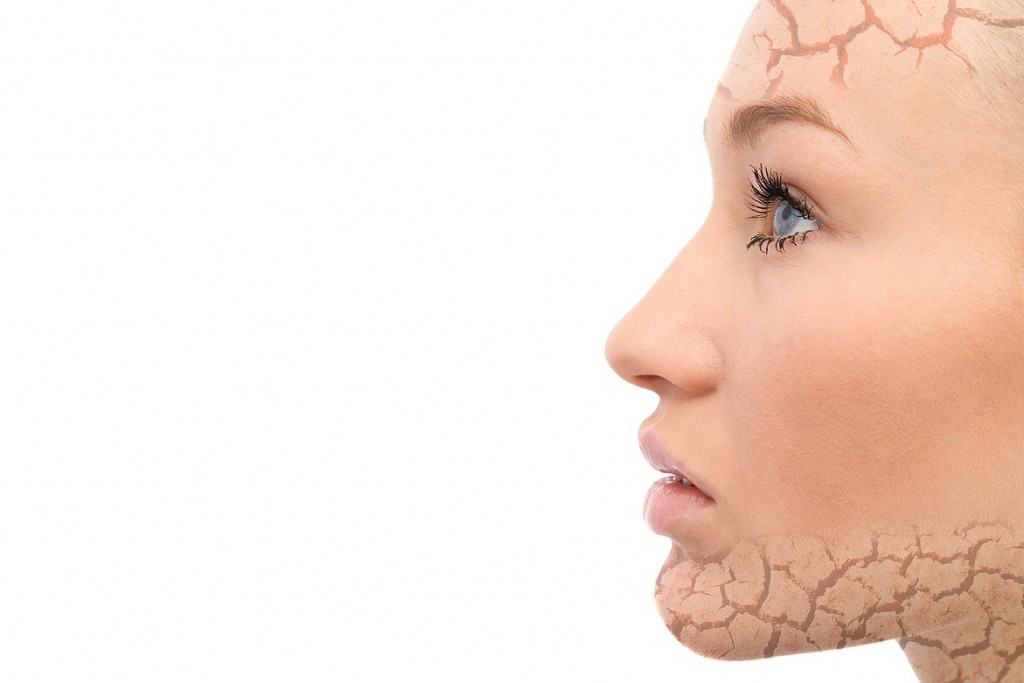 Dry skin is easy to identify: it is dull, rough, thin and thus, red blood vessels can be visible through it. After washing, it gets tight and ages faster than combination and oily skin. Its condition is exacerbated by too frequent cleansing and exfoliating. So how to take care of dry skin and why the skin gets dry? What are the types of dry skin and the most common mistakes in its care?
Dry skin is easy to identify: it is dull, rough, thin and thus, red blood vessels can be visible through it. After washing, it gets tight and ages faster than combination and oily skin. Its condition is exacerbated by too frequent cleansing and exfoliating. So how to take care of dry skin and why the skin gets dry? What are the types of dry skin and the most common mistakes in its care?
Why is the skin dry?
Dry skin gives off less sebum than it needs, which is why it is tight and taut. The consequence of an insufficient amount of sebum is the lack of lipids, which are necessary to maintain the proper level of hydration and proper skin protection.
Dry skin is rarely a congenital feature, although it does happen and mainly affects people with fair skin. Nevertheless, it is usually caused by external factors such as cold, dry or hot air, UV radiation, improper care or taking medication, especially diuretics, which regulate blood pressure and consequently change the water balance in the skin.
Dry skin may be the result of hormonal changes. For this reason, it occurs in pregnant women and during menopause. It is also characteristic for the elderly because with age the skin produces less and less lipids.
Types of dry skin
There are at least two criteria that help distinguish dry skin. According to the first one, you can determine dry, very dry as well as dry and sensitive skin. Dry skin is revealed by a feeling of tightness, tension, and roughness. Very dry skin is not only tight but also chapped, and it also has the tendency to flake off and itch. If the dry skin is additionally sensitive, overactivity of the nerve fibers in the epidermis should be added to all of these symptoms. As a consequence, some cosmetic ingredients may irritate it.
According to another criterion, the skin can be either watery dry or oil dry. Oil dry skin is the result of reduced sebum secretion, while, dehydrated skin is caused by a disorder in sweat secretion and lack of natural moisturizing agents.
Moreover, any skin, regardless of the type, may become dry when the radiators are heating or air conditioning works. Then, the level of indoor air humidity drops even below 45%. In this situation, you can moisturize the skin with the help of appropriate cosmetics or special air humidifiers.
How to take care of dry skin?
Dry skin requires the use of rich and moisturizing cosmetics. The moisturizing cream will complement the deficiencies of natural moisturizing factors that provide and bind moisture in the stratum corneum of the skin. In turn, the oiling cosmetics will supplement the level of lipids and, as a result, prevent the skin from the subsequent loss of moisture.
As a day cream, the best solution is to use a moisturizing cream dedicated to dehydrated skin. Due to the fact that the sun not only gives beautiful tan but also dries out, the product must contain a sunblock with a minimum of SPF 15. However, as for a night care, it is worth going for rich nourishing creams – with the content of ceramides, vegetable oils, urea or emollients. The night cream should lubricate, regenerate and nourish dry skin.
Furthermore, makeup removal cosmetics for dry skin cannot contain any alcohol which could irritate it and dehydrate even more. That’s way, the best solution is to use cleansing milk, emulsions, lotions, and toners dedicated to dry skin. Of course, micellar water will be also beneficial because it doesn’t disturb the protective layer of the epidermis. In addition, it is good to exfoliate the skin with an enzyme peel and apply a moisturizing or nourishing mask at least once a week.
When dealing with very dry skin, it is best to use linseed oil that will moisturize it, smooth it out and leave a pleasant feeling on the skin surface. Flaxseed oil can be added to your favorite shower gel, or to the bath. You might as well rub it into our skin after showering or bathing. Linseed oil is an integral element of dry and atopic skin care.
The most common mistakes in dry skin care
Dry skin care excludes the use of some cosmetics and treatments.
It’s inadvisable to:
- Use mechanical peelings.
This type of cosmetics works better for oily and combination skin, but are too invasive for dry skin. - Wash the face with chlorinated water.
Chlorine can dry out and irritate the skin, therefore, it is a good idea to boil water (and cool it down) before using it for the face wash. - Wash the face with soap.
Soap deprives the skin not just of impurities but also the sebum (dry skin lacks enough sebum). What’s more, it dehydrated and may cause irritation. - Rub the skin vigorously with a towel.
Rubbing the skin with a towel will also get rid of sebum. Instead, you should gently but firmly press the towel against your face and wait until it absorbs all the water. - Use thermal water inappropriately.
Thermal water abounds in minerals that are aimed to reinforce natural protective mechanisms and reduces the risk of irritation. However, after applying it, you need to dry the skin, for example with a paper towel, because otherwise, it will evaporate and consequently dry out the skin.

Leave a Reply